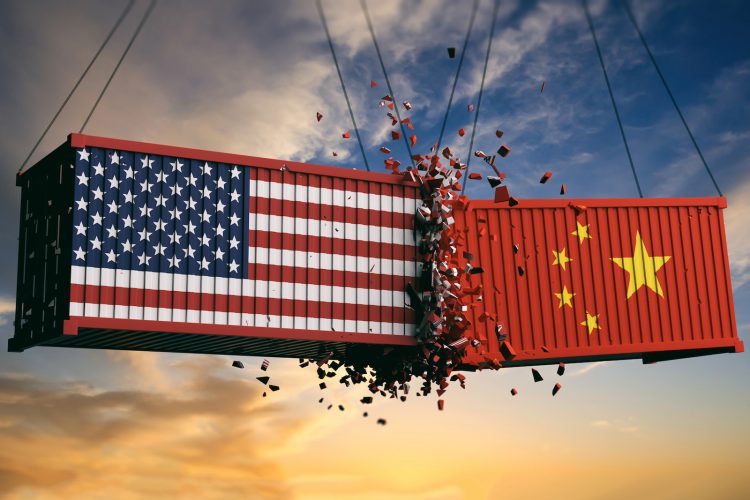Introduction
Geopolitical tensions have long played a significant role in shaping global trade flows, and in today’s interconnected world, their influence is more profound than ever. As countries engage in diplomatic standoffs, economic sanctions, and trade wars, international businesses and governments face an array of challenges in maintaining trade stability and growth. The consequences of these tensions can ripple through industries, create bottlenecks in supply chains, and disrupt key trade routes. The ongoing geopolitical challenges in regions such as the South China Sea, Eastern Europe, and the Middle East continue to alter how goods and services are traded across borders, leading to both opportunities and risks for businesses around the world.
This article explores how geopolitical hotspots affect major trade routes, the economic consequences of sanctions and trade barriers, and how global companies are adjusting their supply chains in response to increasing geopolitical conflicts.
1. Geopolitical Hotspots and Their Impact on Major Trade Routes
Geopolitical hotspots—regions where tensions between countries are particularly high—can have significant effects on global trade flows. These areas often serve as crucial chokepoints or hubs for global commerce, and disruptions can send shockwaves across international markets.
For example, the South China Sea is one of the most important maritime trade routes in the world, through which trillions of dollars’ worth of goods are transported each year. Tensions between China and several Southeast Asian nations, along with the U.S. and its allies, over territorial disputes and military presence in the region have raised concerns about potential disruptions to these vital shipping lanes. Any conflict in this region could lead to the blockage of key waterways, forcing businesses to reroute shipments or face delays, ultimately raising the cost of goods and causing supply chain disruptions across industries.
Another critical region for global trade is the Middle East, where geopolitical instability has led to fluctuating oil prices and disruptions in key trade routes such as the Strait of Hormuz. As one of the world’s busiest maritime passages for oil shipments, any disruptions in this area—whether from political conflicts, naval blockades, or military activity—can have far-reaching effects on global energy markets and other sectors that depend on oil, such as manufacturing and transportation.
Similarly, in Eastern Europe, the ongoing conflict between Russia and Ukraine has severely impacted the flow of goods in the region, particularly energy resources like natural gas and oil. Sanctions imposed on Russia by the European Union, the U.S., and other countries have disrupted supply chains, forcing businesses to find new sources for raw materials and energy.

2. Sanctions and Trade Barriers: Economic Consequences
Sanctions and trade barriers are common tools used by countries to exert economic pressure on one another in response to geopolitical tensions. While these measures are designed to hurt an adversary’s economy or force political change, they can also have unintended consequences on global markets, affecting both the sanctioned country and its trading partners.
Sanctions, particularly those targeting specific sectors (e.g., finance, energy, technology), can isolate a country from the global economic system, preventing businesses from accessing essential goods, services, and capital. For instance, U.S. sanctions on Iran have greatly hindered Iran’s ability to trade oil, impacting global oil markets and causing volatility in energy prices. In response, countries like China and Russia have sought alternative trading mechanisms, often outside the U.S.-dominated financial system, creating new trade flows that bypass traditional systems like SWIFT or U.S. dollar transactions.
The imposition of tariffs and trade barriers, often seen in trade wars, can also slow the flow of goods and increase costs for consumers and businesses. The U.S.-China trade war, for example, led to a significant increase in tariffs on billions of dollars’ worth of goods, resulting in higher production costs for companies reliant on Chinese imports. Companies have often been forced to shift production or find new suppliers, leading to disruptions and inefficiencies in global supply chains.
The economic consequences of such sanctions and barriers are not confined to the countries directly involved in the conflicts. Countries with strong trade ties to the affected region may also feel the effects of these disruptions, as supply chains become more complex, and the cost of doing business increases. These economic ripple effects can lead to inflation, reduced consumer spending, and slower global economic growth.
3. Global Companies’ Responses: Adjusting Supply Chains to Geopolitical Risks
In the face of rising geopolitical risks, global companies are increasingly forced to adapt their supply chains to mitigate the potential impact of conflict. These adjustments are often centered around reducing dependency on specific regions or countries that are prone to geopolitical tensions.
One of the primary strategies companies have adopted is geographic diversification. By spreading manufacturing and sourcing operations across multiple countries or regions, businesses can avoid the risks associated with geopolitical hotspots. For example, many multinational corporations have shifted their production out of China in recent years, seeking alternatives in Southeast Asia, India, or Latin America. This strategy not only reduces the risks tied to tensions between China and the U.S., but also takes advantage of emerging markets with competitive labor costs and a growing consumer base.
Another key adjustment involves reshoring or nearshoring production closer to home markets. Companies are increasingly moving operations back to developed economies, such as the U.S. or Europe, to reduce reliance on global supply chains that can be disrupted by geopolitical tensions. This shift is particularly prominent in industries such as electronics, where companies like Apple have sought to diversify manufacturing away from China to places like India or Vietnam.
In addition to geographic diversification, companies are also investing heavily in technology to improve supply chain resilience. Technologies like blockchain, artificial intelligence, and the Internet of Things (IoT) are being used to improve visibility and tracking across supply chains, allowing companies to react quickly to disruptions. These technologies can also enhance transparency, helping businesses track the origins of raw materials and components, ensuring compliance with evolving sanctions and trade regulations.
Furthermore, businesses are increasingly building greater flexibility into their supply chains. This flexibility includes developing multiple suppliers for critical materials, using just-in-case inventory management systems (as opposed to just-in-time systems), and building in extra capacity to cope with sudden shifts in demand or supply.
4. The Long-Term Outlook: Geopolitical Tensions and Trade Evolution
Looking ahead, the role of geopolitical tensions in shaping global trade flows is likely to continue growing. While global supply chains have become more interconnected over the years, companies are increasingly aware of the risks posed by geopolitical uncertainties. The trend toward diversification, reshoring, and increased technological investment is likely to accelerate as businesses seek to protect themselves from the fallout of regional conflicts.
However, the evolving geopolitical landscape also presents new opportunities. As trade barriers increase in certain regions, companies may explore new markets and untapped regions. Countries in Africa, Latin America, and Southeast Asia are becoming more prominent players in global trade, offering new avenues for investment and trade partnerships.
The digital transformation of trade, including the rise of e-commerce and digital trade platforms, is also reshaping the landscape. The ability to conduct cross-border transactions quickly and efficiently through online platforms provides businesses with greater flexibility in navigating geopolitical risks.
Conclusion
Geopolitical tensions have far-reaching consequences for global trade flows. Disruptions to major trade routes, the imposition of sanctions and trade barriers, and the broader economic fallout from conflicts can create challenges for businesses around the world. However, global companies are actively adjusting their supply chains to mitigate risks, through diversification, technological investments, and increased flexibility. While these adjustments are costly and complex, they are necessary for ensuring that businesses can thrive in an increasingly volatile geopolitical environment.
Ultimately, while geopolitical tensions are unlikely to subside in the near future, businesses that can effectively navigate these challenges by being proactive in their supply chain strategies will be best positioned to weather the storm and find new opportunities in the evolving global trade landscape.





























